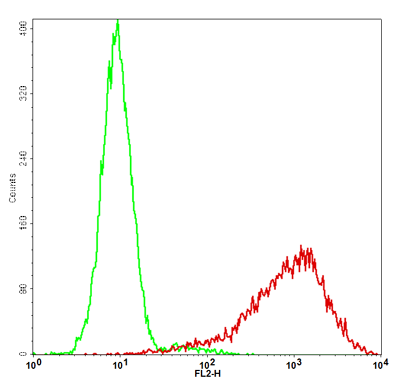Recombinant Human PAPS Synthase 1/PAPSS1 (C-6His)(Discontinued)
Shipping Info:
For estimated delivery dates, please contact us at [email protected]
| Amount : | 50 µg |
| Content : | Supplied as a 0.2 µm filtered solution of 20mM Tris-HCl buffer (pH 8.0), 100mM NaCl and 20% glycerol. |
| Storage condition : | Store at -20°C, stable for 6 months after receipt. Please minimize freeze-thaw cycles. |
| AA sequence : | MEIPGSLCKKVKLSNNAQNWGMQRATNVTYQAHHVSRNKRGQVVGTRGGFRGCTVWLTGLSGAGKTTVSMALEEYLVCHGIPCYTLDGDNIRQGLNKNLGFSPEDREENVRRIAEVAKLFADAGLVCITSFISPYTQDRNNARQIHEGASLPFFEVFVDAPLHVCEQRDVKGLYKKARAGEIKGFTGIDSEYEKPEAPELVLKTDSCDVNDCVQQVVELLQERDIVPVDASYEVKELYVPENKLHLAKTDAETLPALKINKVDMQWVQVLAEGWATPLNGFMREREYLQCLHFDCLLDGGVINLSVPIVLTATHEDKERLDGCTAFALMYEGRRVAILRNPEFFEHRKEERCARQWGTTCKNHPYIKMVMEQGDWLIGGDLQVLDRVYWNDGLDQYRLTPTELKQKFKDMNADAVFAFQLRNPVHNGHALLMQDTHKQLLERGYRRPVLLLHPLGGWTKDDDVPLMWRMKQHAAVLEEGVLNPETTVVAIFPSPMMYAGPTEVQWHCRARMVAGANFYIVGRDPAGMPHPETGKDLYEPSHGAKVLTMAPGLITLEIVPFRVAAYNKKKKRMDYYDSEHHEDFEFISGTRMRKLAREGQKPPEGFMAPKAWTVLTEYYKSLEKAVDHHHHHH |
Source: Human Cells.
MW :71.9kD.
Recombinant Human PAPS synthase 1 is produced by our Mammalian expression system and the target gene encoding Met1-Ala624 is expressed with a 6His tag at the C-terminus. PAPSS1 is a bifunctional enzyme with both ATP sulfurylase and APS kinase activity. In the N-terminal section, it belongs to the APS kinase family; while the C-terminal section belongs to the sulfate adenylyltransferase family. PAPSS1 can be inhibited by chlorate, and is expressed in many tissues, such as high endothelial venules (HEV) cells and in cartilage. PAPSS1 mediates two steps in the sulfate activation pathway. The first step is the transfer of a sulfate group to ATP to yield adenosine 5'-phosphosulfate (APS), and the second step is the transfer of a phosphate group from ATP to APS yielding 3'-phosphoadenylylsulfate. In mammals, PAPS is the sole source of sulfate; APS appears to be only an intermediate in the sulfate-activation pathway. PAPSS1 also involved in the biosynthesis of sulfated L-selectin ligands in endothelial cells.
MW :71.9kD.
Recombinant Human PAPS synthase 1 is produced by our Mammalian expression system and the target gene encoding Met1-Ala624 is expressed with a 6His tag at the C-terminus. PAPSS1 is a bifunctional enzyme with both ATP sulfurylase and APS kinase activity. In the N-terminal section, it belongs to the APS kinase family; while the C-terminal section belongs to the sulfate adenylyltransferase family. PAPSS1 can be inhibited by chlorate, and is expressed in many tissues, such as high endothelial venules (HEV) cells and in cartilage. PAPSS1 mediates two steps in the sulfate activation pathway. The first step is the transfer of a sulfate group to ATP to yield adenosine 5'-phosphosulfate (APS), and the second step is the transfer of a phosphate group from ATP to APS yielding 3'-phosphoadenylylsulfate. In mammals, PAPS is the sole source of sulfate; APS appears to be only an intermediate in the sulfate-activation pathway. PAPSS1 also involved in the biosynthesis of sulfated L-selectin ligands in endothelial cells.
Endotoxin : Less than 0.1 ng/µg (1 IEU/µg) as determined by LAL test.
For Research Use Only. Not for use in diagnostic/therapeutics procedures.
| Tissue Specificity: | Expressed in testis, pancreas, kidney, thymus, prostate, ovary, small intestine, colon, leukocytes and liver. Also expressed in high endothelial venules (HEV) cells and in cartilage. |
| BioGrid: | 114522. 48 interactions. |
|
There are currently no product reviews
|

















.png)









